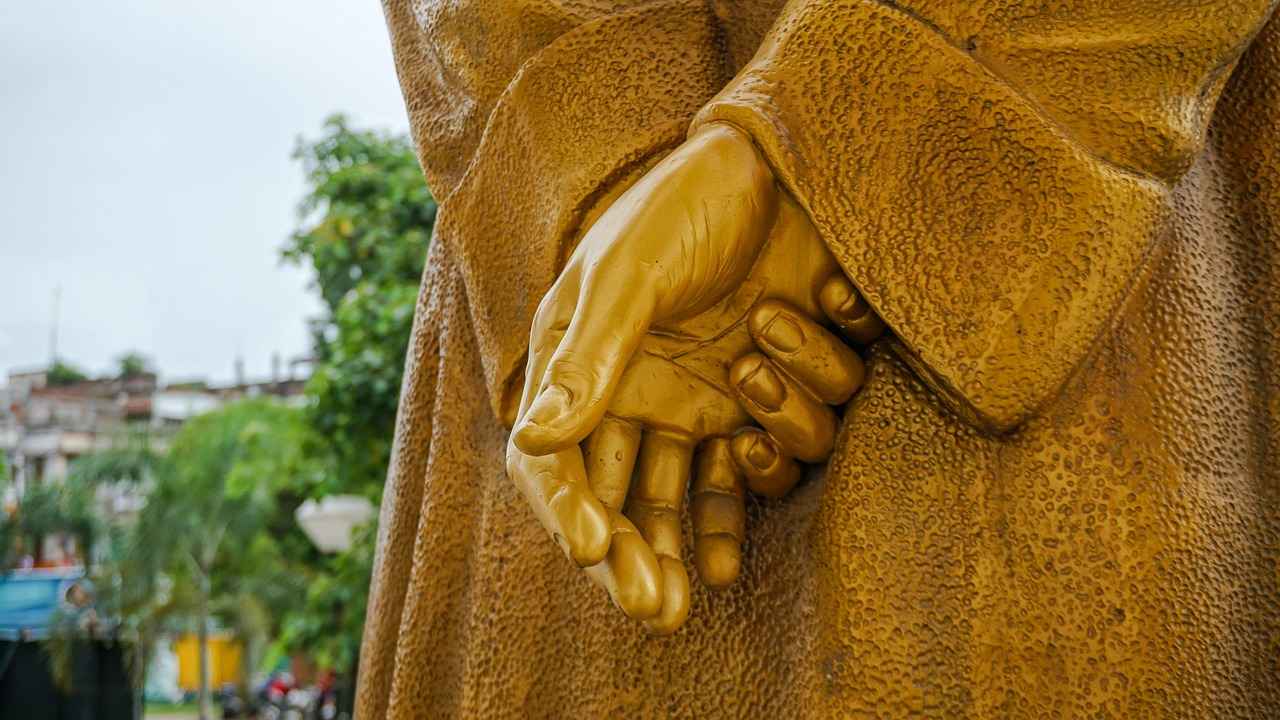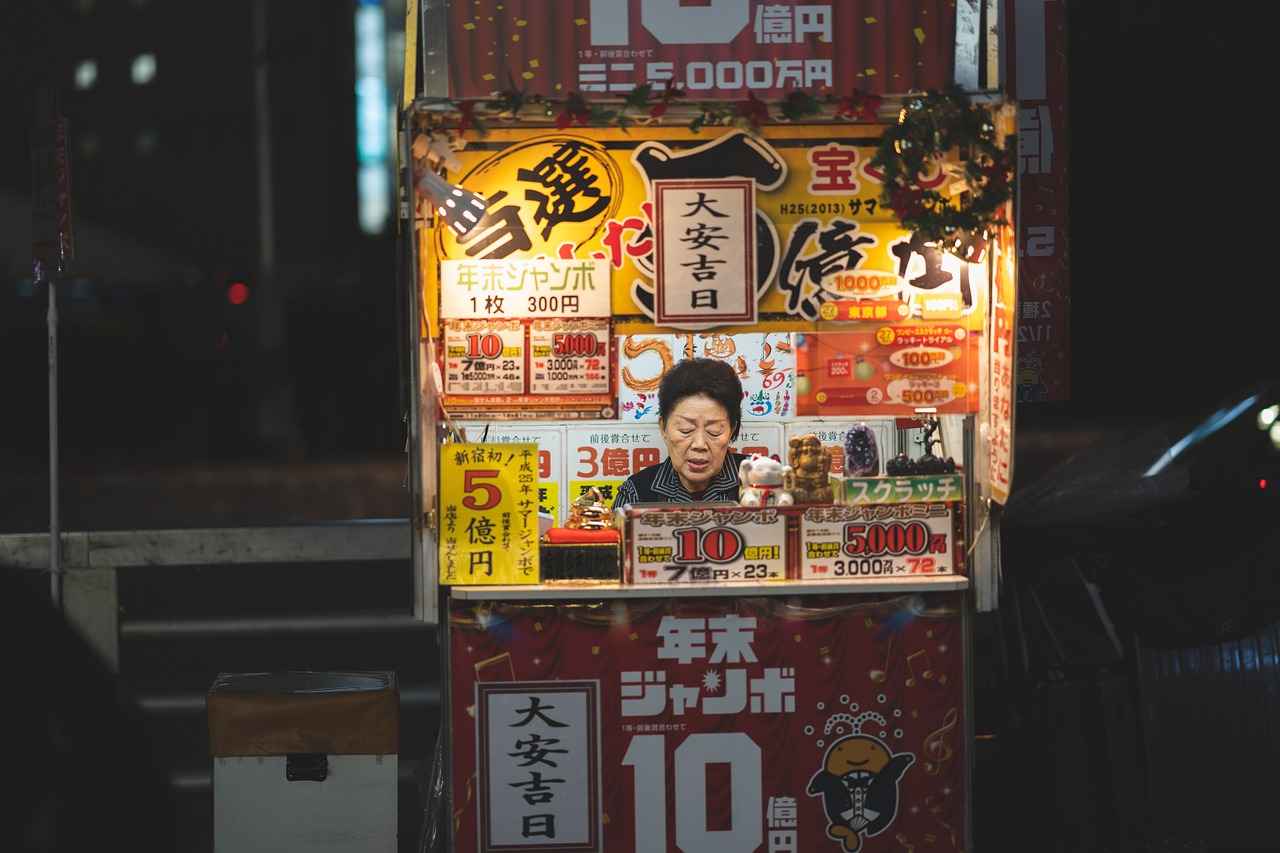Discover the unique cultural heritage, vibrant art scene, and breathtaking natural beauty of Santiniketan, a town in West Bengal. This enchanting destination offers travelers a rich tapestry of experiences and insights into India’s artistic traditions, making it a must-visit for anyone seeking to explore the depths of Indian culture.
The Historical Significance of Santiniketan
Santiniketan is steeped in history, having been founded by the illustrious Rabindranath Tagore. His vision was to create a sanctuary for education and cultural exchange, fostering an environment that transcends conventional boundaries. Tagore’s legacy is palpable throughout the town, where every corner reflects his profound influence on art and education.
Cultural Heritage and Artistic Influence
The town serves as a melting pot of diverse artistic expressions. Visitors can immerse themselves in traditional Bengali art forms, music, dance, and literature, making Santiniketan an essential destination for culture enthusiasts and scholars alike.
- Tagore’s Vision and Legacy: The philosophy of Rabindranath Tagore continues to resonate, attracting visitors eager to understand his contributions to art and education.
- Visva-Bharati University: Founded by Tagore, this university is a beacon of learning, offering courses that merge traditional and modern disciplines in a unique setting.
- Art and Craft of Santiniketan: Local artisans produce exquisite handicrafts, from pottery to textiles, providing authentic souvenirs that reflect the region’s rich cultural heritage.
Festivals and Celebrations
Santiniketan is alive with festivals such as Poush Mela and Basanta Utsav, celebrating art, music, and the changing seasons. These events offer visitors a chance to engage with local traditions and experience the vibrant culture firsthand.
Natural Beauty and Scenic Landscapes
The picturesque landscapes surrounding Santiniketan, with lush greenery and serene lakes, provide a tranquil escape for nature lovers. The beautifully maintained Shantiniketan Gardens, designed by Tagore himself, invite visitors to stroll amidst flowering plants and trees, creating a peaceful atmosphere ideal for reflection.
Nearby Attractions: A Broader Experience
Travelers can explore nearby attractions like the Ballavpur Wildlife Sanctuary and the ancient ruins of the Kankalitala Temple, enriching their experience of West Bengal.
Local Cuisine: A Taste of Bengali Flavors
Santiniketan offers a delightful culinary experience with traditional Bengali dishes that highlight the region’s rich agricultural produce. Must-try dishes include shorshe ilish (hilsa fish in mustard sauce) and paturi (fish wrapped in banana leaves), which showcase the authentic flavors of Bengal.
Practical Tips for Travelers
When planning a visit to Santiniketan, consider the best times to travel, accommodation options, and transportation methods to ensure a smooth and enjoyable experience.
In conclusion, Santiniketan is not just a destination; it is an experience that captivates the heart and mind, offering a glimpse into the rich cultural and artistic heritage of India.

The Historical Significance of Santiniketan
Santiniketan holds a special place in the cultural and educational landscape of India, primarily due to its historical roots established by the visionary Rabindranath Tagore. Tagore, a Nobel laureate in literature, founded this unique town with the intention of creating a space for education and cultural exchange that transcended the traditional boundaries of learning.
Originally conceived as a retreat for Tagore’s family, Santiniketan evolved into a vibrant community dedicated to the arts and education. The town is home to Visva-Bharati University, which Tagore established in 1921. This institution embodies his philosophy of education, emphasizing the integration of nature, art, and humanity. Tagore believed that education should not only focus on academic excellence but also nurture creativity and moral values, making it a holistic experience for students.
The historical significance of Santiniketan is further highlighted by its role as a cultural hub. It attracts artists, poets, and scholars from around the world, fostering a spirit of innovation and collaboration. The town’s annual festivals, such as Poush Mela and Basanta Utsav, celebrate the rich artistic traditions of Bengal, showcasing music, dance, and visual arts. These events are not only a tribute to Tagore’s legacy but also serve as a platform for local artisans to display their talents.
In addition to its educational and cultural contributions, Santiniketan is surrounded by breathtaking natural beauty. The serene landscapes, dotted with lush gardens and tranquil lakes, offer a peaceful retreat for visitors. This harmonious blend of nature and culture makes Santiniketan a must-visit destination for anyone seeking to explore the profound impact of Tagore’s vision.
In conclusion, Santiniketan is more than just a town; it is a living testament to Rabindranath Tagore’s ideals. Its historical significance, coupled with its vibrant cultural scene and stunning natural surroundings, makes it an essential destination for travelers looking to delve into India’s rich artistic heritage.

Cultural Heritage and Artistic Influence
Santiniketan, nestled in the heart of West Bengal, is not just a town but a vibrant canvas of cultural heritage and artistic influence. Its rich tapestry of traditions reflects the essence of Bengali culture, making it a haven for artists, musicians, and writers. This unique destination offers a profound insight into the diverse art forms, music, dance, and literature that have flourished here over decades.
At the core of Santiniketan’s cultural landscape is the legacy of Rabindranath Tagore, who envisioned a space where education and the arts could thrive in harmony. His establishment of Visva-Bharati University served as a catalyst for artistic expression, drawing talents from various backgrounds. This institution remains a beacon of learning and creativity, offering a curriculum that integrates traditional and contemporary disciplines.
- Traditional Art Forms: The town is renowned for its traditional art forms such as pattachitra (scroll painting), which narrates stories through intricate designs.
- Music and Dance: Local performances often feature Baul music and folk dances, captivating audiences with their soulful melodies and vibrant expressions.
- Literary Contributions: Santiniketan has inspired countless writers and poets, making it a vital part of India’s literary heritage.
Festivals such as Poush Mela and Basanta Utsav further enrich Santiniketan’s cultural fabric. These celebrations not only showcase the artistic talents of the region but also invite visitors to immerse themselves in the local traditions, creating an unforgettable experience.
In conclusion, Santiniketan stands as a testament to the enduring power of artistic expression. Its blend of history, culture, and creativity makes it an essential destination for anyone seeking to explore the depths of Bengali heritage. Whether you are an art lover, a history buff, or a casual traveler, Santiniketan promises a journey filled with inspiration and discovery.
Tagore’s Vision and Legacy
Rabindranath Tagore, a luminary in Indian literature and philosophy, envisioned a holistic approach to education that transcended conventional boundaries. His establishment of Santiniketan was not merely an educational endeavor but a profound cultural movement aimed at fostering creativity, spirituality, and a deep connection with nature. This innovative environment attracted scholars, artists, and thinkers from around the globe, all drawn by Tagore’s ideals.
At the heart of Tagore’s philosophy was the belief in the integration of art and education. He sought to create a learning atmosphere that encouraged students to explore their individuality and express their creativity freely. This was a radical departure from the rigid educational systems prevalent during his time. Tagore’s vision emphasized the importance of experiential learning, where students engage with their surroundings, thus nurturing a sense of responsibility towards society and the environment.
Tagore founded Visva-Bharati University, which remains a beacon of his educational ideals. The university promotes a synthesis of traditional and modern knowledge, offering diverse courses that reflect his commitment to cultural exchange. It serves as a vibrant hub where students from various backgrounds collaborate, innovate, and contribute to the arts and sciences.
The cultural landscape of Santiniketan is a testament to Tagore’s enduring influence. The town is alive with artistic expressions, from music and dance to visual arts, drawing visitors who wish to immerse themselves in this rich heritage. Festivals like Basanta Utsav celebrate the arrival of spring with color and joy, reflecting Tagore’s belief in the celebration of life through art.
In conclusion, Tagore’s legacy continues to inspire new generations, making Santiniketan a vital destination for those interested in understanding the profound impact of his philosophy on education and culture. His vision remains a guiding force, encouraging a harmonious blend of nature, art, and learning.
Visva-Bharati University: A Beacon of Learning
Visva-Bharati University, established by the illustrious Rabindranath Tagore in 1921, stands as a beacon of learning and a unique institution that embodies the spirit of cultural fusion. Located in the serene town of Santiniketan, West Bengal, this university is not only an educational hub but also a vibrant center for artistic pursuits and intellectual growth.
Tagore envisioned a place where traditional knowledge coexists with modern education, leading to a holistic learning experience. The university offers a diverse range of courses that span various disciplines, including fine arts, music, and literature, thereby attracting students from all over the globe who are eager to immerse themselves in this rich educational tapestry.
| Discipline | Key Features |
|---|---|
| Fine Arts | Emphasis on traditional techniques and modern expressions |
| Music | Courses in classical, folk, and contemporary music |
| Literature | Focus on Bengali literature and global literary traditions |
One of the most distinctive aspects of Visva-Bharati is its open-air classrooms, where students learn amidst nature, fostering a deep connection with their surroundings. This innovative approach reflects Tagore’s belief in the importance of nature in the educational process, encouraging creativity and critical thinking.
Moreover, the university is home to various cultural events and festivals, such as Basanta Utsav, which celebrates the arrival of spring through music, dance, and art. These events not only enrich the student experience but also invite the local community and visitors to engage with the vibrant culture of Santiniketan.
In conclusion, Visva-Bharati University is more than just an educational institution; it is a living embodiment of Tagore’s vision that promotes a unique blend of art, culture, and education. For anyone seeking a transformative learning experience, this university offers an unparalleled opportunity to explore the depths of knowledge while being immersed in the beauty of Santiniketan.
Art and Craft of Santiniketan
The Art and Craft of Santiniketan is a vibrant reflection of the region’s rich cultural heritage, deeply rooted in traditions that have been passed down through generations. The local artisans are renowned for their exquisite handicrafts, which encompass a diverse range of items, including pottery, textiles, and paintings. These crafts not only showcase the exceptional skills of the artisans but also serve as a testament to the area’s artistic legacy.
Visitors to Santiniketan can immerse themselves in the intricate world of local craftsmanship. The pottery produced here often features unique designs and techniques that are emblematic of Bengali culture. Each piece tells a story, capturing the essence of the land and its people. Textiles crafted by hand in vibrant colors and patterns are another highlight, with traditional weaving methods that have been preserved over centuries.
Moreover, the paintings created by local artists reflect both traditional themes and contemporary styles, often inspired by nature and folklore. These artworks are not just decorative; they are a celebration of the local identity and serve as meaningful souvenirs for visitors seeking to take a piece of Santiniketan home with them.
| Type of Craft | Description |
|---|---|
| Pottery | Handcrafted items featuring traditional designs that represent the culture of Bengal. |
| Textiles | Vibrant fabrics woven using age-old techniques, showcasing the artistry of local weavers. |
| Paintings | Artworks that blend traditional motifs with modern interpretations, often inspired by nature. |
Visitors are encouraged to explore local markets and workshops where artisans demonstrate their craft. This not only supports the local economy but also provides an authentic experience of the region’s artistic spirit. Engaging with these artisans offers a unique opportunity to understand their techniques and the cultural significance behind their creations.
In conclusion, the are not merely products for sale; they embody the soul of the community. By purchasing these handcrafted items, visitors contribute to the preservation of a rich cultural heritage while taking home a piece of Santiniketan’s artistic legacy.
Festivals and Celebrations
Festivals and Celebrations in SantiniketanSantiniketan is a vibrant town in West Bengal, known for its rich cultural tapestry and artistic heritage. One of the most captivating aspects of this town is its festivals, which serve as a celebration of life, art, and the changing seasons. The most notable among these are Poush Mela and Basanta Utsav, both of which offer visitors an immersive experience into the local traditions and customs.
Poush Mela: A Celebration of Winter
Poush Mela, held in December, marks the arrival of winter and is a major attraction for both locals and tourists. This festival is characterized by:
- Traditional Music and Dance: Local artists perform folk songs and dances, showcasing the rich cultural heritage of Bengal.
- Artisan Stalls: Numerous stalls feature handicrafts, pottery, and textiles, allowing visitors to purchase unique souvenirs.
- Culinary Delights: The festival offers a variety of local delicacies, providing a taste of authentic Bengali cuisine.
Basanta Utsav: The Festival of Spring
Basanta Utsav, celebrated in March, is a vibrant festival that marks the arrival of spring. It is closely associated with the teachings of Rabindranath Tagore and includes:
- Colorful Processions: Participants dress in bright yellow and orange hues, symbolizing the arrival of spring.
- Dance and Music Performances: The festival features cultural performances that reflect the joyous spirit of the season.
- Community Engagement: Locals and visitors come together to celebrate, fostering a sense of community and shared cultural identity.
These festivals not only highlight the artistic expressions of the region but also provide a platform for cultural exchange. Visitors are encouraged to participate actively, allowing them to experience the warmth and hospitality of the local community.
In conclusion, the festivals of Santiniketan are more than just events; they are a celebration of life and a testament to the town’s rich cultural heritage. Whether you are an art enthusiast or a casual traveler, attending these festivals offers a unique glimpse into the heart of Bengali culture.

Natural Beauty and Scenic Landscapes
The natural beauty surrounding Santiniketan is nothing short of breathtaking. This charming town in West Bengal is enveloped by lush greenery, tranquil lakes, and vibrant gardens, making it a perfect retreat for those seeking solace in nature. The landscapes here not only offer a feast for the eyes but also provide a serene environment for relaxation and reflection.
Visitors can immerse themselves in the picturesque scenery by exploring various spots around Santiniketan. The Shantiniketan Gardens, meticulously designed by Rabindranath Tagore, are a highlight. These gardens boast an array of flowering plants and trees, creating a peaceful atmosphere ideal for leisurely strolls. The soothing sounds of chirping birds and rustling leaves enhance the experience, making it a perfect getaway for nature lovers.
Moreover, the serene lakes in the vicinity provide opportunities for boating and picnicking. The calm waters reflect the surrounding greenery, creating a stunning backdrop for photography and artistic inspiration. Many visitors find themselves captivated by the tranquility of these lakes, often spending hours simply enjoying the view.
For outdoor enthusiasts, the region offers numerous hiking trails that lead through scenic landscapes. These trails allow visitors to connect with nature while enjoying the fresh air and vibrant flora and fauna. Whether you are a seasoned hiker or a casual walker, the trails cater to all levels of experience.
In conclusion, the enchanting landscapes of Santiniketan are a significant draw for travelers. The combination of lush forests, serene lakes, and vibrant gardens creates a harmonious environment that invites exploration and relaxation. This natural beauty, intertwined with the town’s rich cultural heritage, makes Santiniketan a must-visit destination for anyone seeking a blend of art and nature.
Exploring the Shantiniketan Gardens
The Shantiniketan Gardens, a remarkable creation by the illustrious Rabindranath Tagore, are a testament to the harmony between nature and art. These gardens are not merely a collection of plants; they are a carefully curated experience that invites visitors to immerse themselves in the beauty of the natural world.
As you stroll through the gardens, you will encounter a vibrant array of flowering plants and towering trees, each selected to create a serene atmosphere. The pathways are lined with colorful blooms, providing a feast for the senses. The air is filled with the sweet fragrance of flowers, and the gentle rustling of leaves offers a soothing soundtrack to your visit.
One of the most captivating aspects of the gardens is their design, which reflects Tagore’s philosophy of education and cultural exchange. The layout encourages visitors to explore at their own pace, fostering a sense of reflection and relaxation. Whether you are seeking a quiet spot to meditate or a picturesque location for photography, the gardens cater to all.
| Features of Shantiniketan Gardens | Description |
|---|---|
| Floral Diversity | A wide variety of flowering plants representing the local ecosystem. |
| Tranquil Pathways | Well-maintained paths that encourage leisurely walks. |
| Artistic Installations | Art pieces integrated within the garden landscape, enhancing the aesthetic. |
Visitors often find themselves captivated by the gardens’ ability to evoke a sense of peace. The carefully designed spaces allow for personal reflection, making it an ideal destination for those looking to escape the hustle and bustle of daily life. The gardens serve as a reminder of the beauty that can be found in nature and the importance of preserving it.
In conclusion, the Shantiniketan Gardens are not just a visual delight; they are a sanctuary for the soul. A visit here is an opportunity to connect with nature and reflect on the artistic legacy of Tagore, making it a must-see destination for anyone exploring Santiniketan.
Nearby Attractions: A Broader Experience
While Santiniketan itself is a treasure trove of cultural and artistic experiences, the surrounding areas offer a wealth of attractions that further enrich your journey through West Bengal. Here are some must-visit sites that complement your Santiniketan experience:
- Ballavpur Wildlife Sanctuary: Located just a short drive from Santiniketan, this sanctuary is a haven for nature lovers and wildlife enthusiasts. Spanning over 600 hectares, it is home to diverse flora and fauna, including deer, various bird species, and lush vegetation. Visitors can enjoy guided nature walks and bird-watching activities, providing an immersive experience in the region’s natural beauty.
- Kankalitala Temple: This ancient temple, dedicated to the goddess Kankalitala, is steeped in history and spirituality. Nestled by a serene water body, the temple is known for its tranquil atmosphere and beautiful architecture. Pilgrims and tourists alike visit this sacred site to seek blessings and appreciate the intricate carvings and the rich cultural heritage it represents.
- Bolpur: Just a few kilometers from Santiniketan, Bolpur is a bustling town that showcases the local lifestyle and traditions. Visitors can explore local markets, enjoy street food, and interact with the friendly locals, gaining insights into the everyday life of West Bengal.
- Shantiniketan Ashram: This ashram, founded by Rabindranath Tagore, is integral to the cultural landscape of the region. It serves as a center for artistic and spiritual pursuits, and visitors can participate in workshops and cultural programs that celebrate Tagore’s legacy.
In conclusion, exploring these nearby attractions not only enhances your understanding of the rich cultural tapestry of West Bengal but also allows you to connect with nature and history in a profound way. Each site offers unique insights and experiences, making your visit to Santiniketan truly unforgettable.

Local Cuisine: A Taste of Bengali Flavors
Santiniketan, a town steeped in culture and tradition, is not just a feast for the eyes with its artistic heritage but also a paradise for food lovers. The local cuisine is a vibrant reflection of the region’s agricultural bounty and culinary traditions, offering visitors an opportunity to savor the authentic flavors of Bengal.
The culinary landscape of Santiniketan is characterized by a delightful array of traditional Bengali dishes that highlight the region’s rich agricultural produce. From the moment you step into a local eatery, the aroma of freshly prepared meals fills the air, inviting you to indulge in a gastronomic adventure.
- Shorshe Ilish: This iconic dish features hilsa fish cooked in a spicy mustard sauce, a true delicacy that captures the essence of Bengali cuisine.
- Paturi: Fish marinated in spices and wrapped in banana leaves, then steamed to perfection, showcasing the region’s unique cooking techniques.
- Chingri Malai Curry: A creamy prawn curry enriched with coconut milk, this dish is a must for seafood lovers.
- Bhapa Doi: A traditional sweet dish made with yogurt, sugar, and cardamom, served chilled for a refreshing end to your meal.
When it comes to dining, Santiniketan offers a variety of options ranging from quaint cafes to local eateries. Here are some popular spots:
- Bonolota: Known for its homely ambiance and delicious Bengali thalis.
- Amra Sabai: A favorite among locals for its authentic flavors and fresh ingredients.
- Shantiniketan Restaurant: Offers a mix of traditional and modern dishes, perfect for those looking to explore.
Dining in Santiniketan is not just about the food; it’s an experience that allows you to immerse yourself in the local culture. Many restaurants are adorned with artworks and crafts, reflecting the artistic spirit of the town. As you enjoy your meal, you can often hear the soft melodies of Rabindranath Tagore’s songs in the background, enhancing the overall ambiance.
In conclusion, Santiniketan’s local cuisine is a remarkable aspect of its cultural identity, offering visitors a chance to taste the rich flavors of Bengal. Whether you are a seasoned foodie or a curious traveler, the culinary delights of this town are sure to leave a lasting impression.
Must-Try Dishes in Santiniketan
When visiting Santiniketan, one of the highlights of your journey will undoubtedly be the opportunity to indulge in its culinary delights. The region is famous for its rich and diverse food culture, which is deeply rooted in Bengali traditions. Among the many dishes available, there are a few local specialties that should not be missed.
Shorshe Ilish, or hilsa fish cooked in a mustard sauce, is a quintessential Bengali dish that is cherished by locals and visitors alike. The hilsa fish, known for its rich flavor and tender texture, is marinated with mustard paste, green chilies, and spices, then steamed or cooked in a pan. This dish is not only a feast for the palate but also a reflection of Bengal’s agricultural heritage, as hilsa fish is often caught in the rivers that flow through the region.
Another must-try dish is Paturi, which features fish wrapped in banana leaves and cooked to perfection. This method of cooking enhances the flavor of the fish, allowing it to absorb the aromatic essence of the banana leaves. Typically, the fish is marinated with spices and mustard paste before being wrapped and steamed, resulting in a tender and flavorful dish that showcases the culinary artistry of Bengali cuisine.
For those looking to experience the full spectrum of Bengali flavors, it is also worth trying Chingri Malai Curry (prawn curry in coconut milk) and Bengali Mishti (sweets), which include delicacies like rasgulla and sandesh. These dishes highlight the region’s emphasis on fresh ingredients and traditional cooking techniques.
In conclusion, a visit to Santiniketan is incomplete without savoring its local cuisine. The unique flavors and cooking styles of dishes like shorshe ilish and paturi not only provide a taste of Bengal but also offer a deeper connection to the cultural heritage of this remarkable region. Don’t forget to explore local eateries and cafes where you can enjoy these authentic dishes in a cozy and artistic atmosphere.
Where to Dine in Santiniketan
Santiniketan, a gem in West Bengal, is not only known for its rich cultural heritage and artistic legacy but also for its vibrant culinary scene. The town offers a variety of dining options that allow visitors to indulge in delicious meals while enjoying the unique artistic ambiance that Santiniketan is famous for. From charming cafes to local eateries, the dining experience here is a feast for both the palate and the senses.
- Quaint Cafes: Many cafes in Santiniketan are adorned with local artwork and provide an inviting atmosphere for visitors. These establishments serve a range of snacks and beverages, perfect for a quick break after exploring the town.
- Local Eateries: For those looking to savor authentic Bengali cuisine, local eateries offer traditional dishes made with fresh, locally sourced ingredients. Dishes like shorshe ilish (hilsa fish in mustard sauce) and paturi (fish wrapped in banana leaves) are must-tries.
- Vegetarian Delights: Santiniketan also caters to vegetarian visitors with a variety of options, including aloo posto (potatoes in poppy seed paste) and shobji bhaja (fried vegetables), showcasing the region’s culinary diversity.
- Street Food: Don’t miss the chance to sample local street food, where vendors serve up delightful snacks like puchka (pani puri) and chaat, offering a burst of flavors that reflect the local culture.
Dining in Santiniketan is not just about the food; it’s about the experience. Many restaurants feature live music or art displays, enhancing the overall atmosphere. Whether you’re enjoying a meal under a canopy of trees or inside a cozy cafe, the artistic spirit of the town is always present, making every bite a memorable one.
In conclusion, Santiniketan’s dining scene is a reflection of its cultural richness. Visitors are encouraged to explore various options, each offering a unique taste of Bengali flavors while immersing themselves in the artistic vibe of this remarkable town.

Practical Tips for Travelers
Planning a visit to Santiniketan requires careful consideration to ensure a fulfilling experience. Here are some practical tips that can enhance your travel journey:
- Best Times to Visit: The ideal time to explore Santiniketan is during the winter months, from November to February. The weather is pleasant, making it perfect for outdoor activities and sightseeing. Additionally, visiting during the Poush Mela in December or the vibrant Basanta Utsav in March can provide unique cultural experiences.
- Accommodation Options: Santiniketan offers a range of accommodation to suit various budgets. You can choose from luxury hotels to budget guesthouses. Popular options include the Birbhum Tourist Lodge and Gurudev’s Ashram, which reflect the town’s artistic heritage.
- Transportation Methods: Getting to Santiniketan is relatively easy. The nearest major railway station is Bolpur, which is well-connected to major cities. From there, you can hire a taxi or take a local bus to reach Santiniketan. For local travel, consider renting a bicycle or using auto-rickshaws to explore the town at your own pace.
- Local Etiquette: Respect the local culture and traditions while visiting. Dress modestly, especially when visiting religious sites, and be mindful of local customs. Engaging with artisans and locals can enrich your experience, so don’t hesitate to ask questions and learn more about their craft.
- Health and Safety: Ensure you stay hydrated and carry necessary medications, as some areas may have limited access to pharmacies. It’s advisable to have travel insurance to cover any unforeseen circumstances during your trip.
By keeping these practical tips in mind, you can ensure a smooth and enjoyable visit to Santiniketan, allowing you to fully immerse yourself in its rich cultural heritage and scenic beauty.
Frequently Asked Questions
- What is the best time to visit Santiniketan?
The ideal time to explore Santiniketan is between November and February when the weather is pleasant, making it perfect for outdoor activities and cultural festivals.
- What are the must-try dishes in Santiniketan?
You absolutely cannot miss local delicacies like shorshe ilish (hilsa fish in mustard sauce) and paturi (fish wrapped in banana leaves). These dishes truly capture the essence of Bengali cuisine!
- Is Santiniketan suitable for families?
Definitely! Santiniketan offers a mix of cultural experiences and natural beauty, making it a wonderful destination for families looking to bond over art, history, and nature.
- What cultural festivals are celebrated in Santiniketan?
Don’t miss events like Poush Mela and Basanta Utsav, which showcase the rich artistic traditions of the region and provide visitors with a vibrant experience of local culture.
- How can I reach Santiniketan?
Santiniketan is well-connected by road and rail. The nearest railway station is Bolpur, which is just a few kilometers away, making it easy for travelers to access this cultural haven.


























































